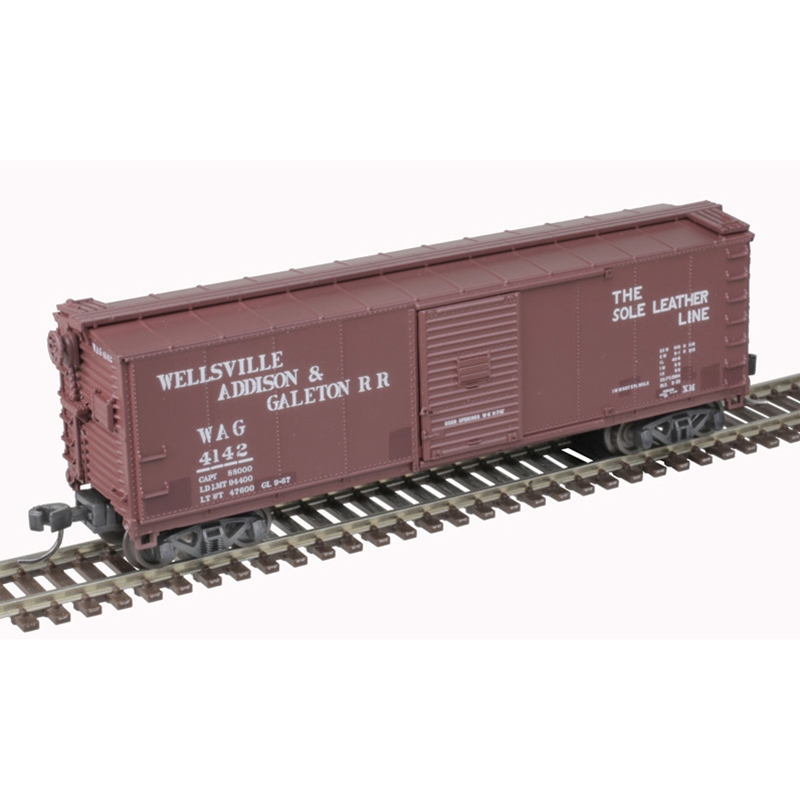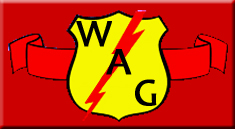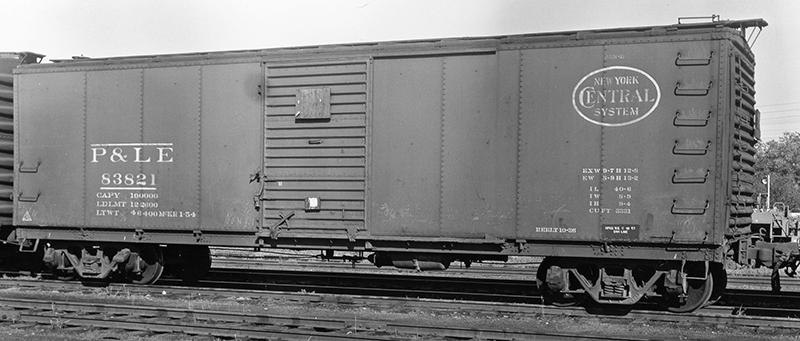Model Information: This Atlas model was announced in June 2006 with an April, 2007 delivery date. It is one of the only Atlas models to feature opening doors. This model features:
Opening Door;
Andrews trucks;
Ready-to-run;
Accurate painting and printing;
AccuMate® couplers;
Brake detail;
Highly detailed body;
Simulated wood or steel door as per the prototype;
Fishbelly or Standard underframe as per the prototype;
Different rib ends (7-8 or 5-5-5) as per the prototype;
Undecorated cars come with both simulated wood or steel door.
Prototype History: By the beginning of WWII, the majority of the classic USRA double-sheathed box cars and their clones were rebuilt with steel sides. More rebuilds followed in the late 1940s and early 1950s. By late 1948, close 14,000 of the original 24,500 USRA double-sheathed cars had been rebuilt with quite a degree of variation including the end, door and underframe. These steel side rebuilds were far more popular than their single-sheathed counterparts.
Road Name History: The WA&G originated in 1954 by Murray Salzburg, who had made a career scrapping abandoned railroads but ultimately went on to save some he thought worthy of a second chance. Salzburg inquired with Baltimore & Ohio about buying some former Buffalo & Susquehanna lines along the Pennsylvania-New York border. In 1956, Salzburg and his new WA&G took over a V-shaped route from Galeton, Pennsylvania northwest to Wellsville, New York and from Galeton northeast to Addison, New York. A short branch from the Addison line went to Ansonia. Total length was 91 miles. The locomotive fleet was noteworthy. Operations began with seven GE 125-ton switchers that had been built in 1937 and custom styled for Ford Motor Company’s River Rouge plant in Michigan. They received the orange and cream colors that were used on Salzburg’s other shortlines.
The WA&G was located in the “leather belt” and tanneries provided much of the business. WA&G bought a modest fleet of old wood sided boxcars from Boston & Maine. These cars received WA&G name and “The Sole Leather Line” motto on their sides. Since hauling raw animal hides makes the boxcars unfit for any other service, that’s likely why Salzburg bought such old cars.
In 1959, the Addison line was cut back to Elkland after a bridge was condemned. In 1968, it became clear that the GE switchers were on their last legs so Salzburg supplemented them with a fleet of former Southern Pacific F7’s. In 1972, flooding washed out the Wellsville line. WA&G had already applied to abandon that line so no harm, no foul. WA&G was now down to 40 of the original 91 miles. The last train ran in March of 1979 and the Wellsville Addison & Galeton was abandoned.
The WA&G was located in the “leather belt” and tanneries provided much of the business. WA&G bought a modest fleet of old wood sided boxcars from Boston & Maine. These cars received WA&G name and “The Sole Leather Line” motto on their sides. Since hauling raw animal hides makes the boxcars unfit for any other service, that’s likely why Salzburg bought such old cars.
In 1959, the Addison line was cut back to Elkland after a bridge was condemned. In 1968, it became clear that the GE switchers were on their last legs so Salzburg supplemented them with a fleet of former Southern Pacific F7’s. In 1972, flooding washed out the Wellsville line. WA&G had already applied to abandon that line so no harm, no foul. WA&G was now down to 40 of the original 91 miles. The last train ran in March of 1979 and the Wellsville Addison & Galeton was abandoned.
Brand/Importer Information: In 1924 Stephan Schaffan, Sr. founded the Atlas Tool Company in Newark, New Jersey. In 1933 his son, Stephan Schaffan, Jr., came to work for his father at the age of sixteen. Steve Jr. built model airplanes as a hobby and frequented a local hobby shop. Being an enterprising young man, he would often ask the owner if there was anything he could do to earn some extra spending money. Tired of listening to his requests, the hobby-store owner threw some model railroad track parts his way and said, "Here, see if you can improve on this".
In those days, railroad modelers had to assemble and build everything from scratch. Steve Jr. created a "switch kit" which sold so well, that the entire family worked on them in the basement at night, while doing business as usual in the machine shop during the day.
Subsequently, Steve Jr. engineered the stapling of rail to fiber track, along with inventing the first practical rail joiner and pre-assembled turnouts and flexible track. All of these products, and more, helped to popularize model railroading and assisted in the creation of a mass-market hobby. The budding entrepreneur quickly outgrew the limitations of a basement and small garage operation. Realizing they could actually make a living selling track and related products, Steve and his father had the first factory built in Hillside, New Jersey at 413 Florence Avenue in 1947. On September 30, 1949, the Atlas Tool Company was officially incorporated as a New Jersey company.
In 1985, Steve was honored posthumously for his inventions by the Model Railroad Industry Association and was inducted into the Model Railroad Industry Hall of Fame in Baltimore, Maryland. In addition, Steve was nominated and entered into the National Model Railroad Association Pioneers of Model Railroading in 1995.
In the early 1990s, the Atlas Tool Company changed its name to Atlas Model Railroad Company, Inc.
In those days, railroad modelers had to assemble and build everything from scratch. Steve Jr. created a "switch kit" which sold so well, that the entire family worked on them in the basement at night, while doing business as usual in the machine shop during the day.
Subsequently, Steve Jr. engineered the stapling of rail to fiber track, along with inventing the first practical rail joiner and pre-assembled turnouts and flexible track. All of these products, and more, helped to popularize model railroading and assisted in the creation of a mass-market hobby. The budding entrepreneur quickly outgrew the limitations of a basement and small garage operation. Realizing they could actually make a living selling track and related products, Steve and his father had the first factory built in Hillside, New Jersey at 413 Florence Avenue in 1947. On September 30, 1949, the Atlas Tool Company was officially incorporated as a New Jersey company.
In 1985, Steve was honored posthumously for his inventions by the Model Railroad Industry Association and was inducted into the Model Railroad Industry Hall of Fame in Baltimore, Maryland. In addition, Steve was nominated and entered into the National Model Railroad Association Pioneers of Model Railroading in 1995.
In the early 1990s, the Atlas Tool Company changed its name to Atlas Model Railroad Company, Inc.
Item created by: CNW400 on 2022-12-01 09:58:58. Last edited by CNW400 on 2024-08-16 22:29:24
If you see errors or missing data in this entry, please feel free to log in and edit it. Anyone with a Gmail account can log in instantly.
If you see errors or missing data in this entry, please feel free to log in and edit it. Anyone with a Gmail account can log in instantly.











